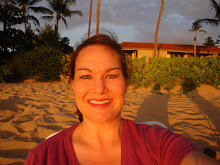Hello everyone,
I want to share more information about Kongiganak, since I didn't include enough information when I published my flicker slideshow. Kongiganak has been experiencing a moderate population growth over the last several years. The origin of the village began in 1964 when my grandparents, Charlie and Elizabeth David, along with another family moved to Kong from Kwigillingok. They moved because they wanted to live on higher land. Flooding was a concern in Kwigillingok and that basically forced the moved. Shortly thereafter, the population of Kongiganak started to increase.
Kongiganak is an unincorporated community within an unorganized borough. It is governed by a traditional council. The council owns and operates the washeteria, the village office, the community center and the health clinic. Qemirtalek Coast Corporation was incorporated in 1972 after the Native Claims Settlement Act was passed on December 18, 1971. With 250 people enrolled in the corporation, Qemirtalek was entitled to 115,200 acres of land. Qemirtalek Coast Corporation is managed by five board of directors. Children born after December 18, 1971 don’t receive stock from their corporation.
Currently there are two active religious denominations in Kongiganak. Approximately three quarters of the villagers are Moravian. The church consists of about 250 members. When Kongiganak was first established, community members of around twenty people would gather in tents for church services.The current Moravian church was constructed right after the log cabin school was built in the early 1970’s. The congregation is maintained and operated by the congregation and by selected officers.
The Russian Orthodox Church has a congregation of about fifty members. One of their main annual celebrations is the Russian Christmas (Slaviq). In early January, members of the church take part in activities that are related to the Slaviq celebration. Families donate gifts and they are given to various households. While at the houses, members of the Russian Orthodox Church will sing songs, pass out gifts, pray and eat with members of that particular household. This will continue from one house to another until all of the gifts have been distributed. Generally school starts around January 10th, paying respect to this tradition.
When Kongiganak was first established, about sixty students used the log cabin for their classes. Students were given the option of staying in the village and receiving an 8th grade education, or going on to a boarding school for their high school years. Some students went to boarding schools in Mt. Edgecumbe, Sitka, and Oklahoma.
In 1975 a new school was built. The school was large enough to educate students from kindergarten through the 12th grade. The school was named after a life long school board member, Dick R. Kiunya. The school was built with classrooms on two sides of the hallways. In the middle, temporary partitions were set up and used as classrooms. At the time, a school developer felt the children could learn better if students were in an open area. It’s questionable whether this format actually has improved or impeded the students learning.
Today there are about 120 students enrolled at the school. Many students are active in basketball, cross-country, Native Youth Olympics and student government. Over the last couple of decades, several students have to go to boarding school in Mt. Edgecumbe, Sitka and Nenana. Parents often feel that students in boarding schools are offered more structure, better academic opportunities, more educational role models and a wider variety of extra curricular activities that allows the students to travel.
The people of Kongiganak have been dependent on land, water and the welfare system for their survival. There is plenty of wild game to fill the freezers of residents year round. Many people hunt for caribou, moose, ducks, geese, ptarmigan, seal and walrus. Salmon, white fish, herring and halibut are harvested from the waters.
Berry picking is a main stay in the village. Several people go out on the tundra between the months of July and September to pick blackberries, blueberries, salmonberries, raspberries and red berries. Berries are often used to make akutaq. Hunting, fishing and gathering berries has gone on for years.
Kongiganak is a relatively new village having only been in existence for less than 50 years. My family relatives said they have seen many changes in Kongiganak since its inception in 1964. While the subsistence lifestyle has remained fairly constant, the ways and means of hunting and fishing has changed. More boats, four wheelers and snow machines have given hunters and fisherman an upper hand on gathering meat and fish for their families. The growth in the village also has increase in the number of planes flying into the village. Three small airlines travel to Kongiganak on a regular basis transporting goods and passengers to and from Bethel and the surrounding communities.
Thursday, October 18, 2007
Subscribe to:
Post Comments (Atom)


3 comments:
Nice summary; it is often difficult to give others outside a flavor of one's own community.
Kong was one of the first communities I worked with on Grassroots Science (in Alaska’s Unorganized Borough along Yukon Kuskokwim Nushagak Rivers) ages ago. I really enjoyed my visits. By the way, there is only the one Unorganized Borough in the USA (maybe the world). But, boy, do we have the know-how to share.
That was a lot of info--thanks for sharing all that. Isn't it funny that 50 yeasrs can seem either slow or fast depending on what perspective you use. Theresa
I love your story. Born 1964. True, life changes..
Post a Comment